Mirrorless Cameras and Mirrorless Interchangeable Lens Cameras (often referred to as MLCs and MILCs, respectively) are becoming very popular amongst photographers. The recent round of MLCs/MILCs offer excellent image quality through good sensor technology on par with digital SLR cameras, but in a significantly smaller and lighter form factor.
Canon’s entry into the MLC arena was marked just over a year ago (June 2012) with the release of the EOS M. On first glance it looked exciting. A mirrorless camera from Canon, with interchangeable lenses, an APS-C sensor, touchscreen LCD, and a hot shoe.
Unfortunately, the EOS M was tagged with an original retail price of $799 USD (with one of two different lenses: 22mm f/2 or 18-55mm f/3.5-5.6 IS), no viewfinder (or electronic viewfinder accessory), and no other lenses with the EOS M’s EF-M mount being released. The EOS M was also subject to less than stellar autofocus (AF) performance.
The higher than expected price ($799 was higher than Canon’s entry level dSLRs), lack of lens support, and the poor AF performance discouraged many from adopting the EOS M, particularly those already using Canon dSLR products (myself included).
In late June 2013, Canon was able to address the poor AF performance in the EOS M through a firmware upgrade. AF performance was noticeably improved and many found the EOS M to be a fairly usable camera.
Given the short history of the EOS M, I was not very impressed at all.
But in early July 2013, I noticed that B&H posted on their Facebook page that the EOS M with 22mm f/2 STM lens was marked down to $299 USD.
I sold my backup dSLR body (Canon 5D Mark II) a couple months ago due to lack of usage and was looking to get another second camera body (possibly a used 7D) just for an emergency backup, but primarily for a second camera for video footage capture.
Since the EOS M is an APS-C sensor camera with the ability to accept my existing Canon EF lenses using the EF to EF-M adapter, and can capture both stills and video, the EOS M is an intriguing option.
Dropping down to $299 from the original $799 is a 63% price drop. So after a few minutes of pondering the EOS M for under $300, I decided to order one.
The EOS M is not a “pocket camera” as far as size. It is definitely small, but you won’t be able to get it into your front pants pocket. It’ll fit in cargo pants/shorts pockets, or a jacket pocket, though. This isn’t a negative aspect, since the goal of MLC isn’t necessarily to get a pocket-sized camera.
The screen itself is very clear and bright. But the one great aspect is the fact that it is a touchscreen. So you can walk through menus and adjust camera settings (including the exposure triangle: shutter speed, aperture, and ISO) by touching the LCD. During playback mode when reviewing, or chimping, a photo, you can use the pinch-to-zoom gesture with your fingers, just like with an iPhone. The touchscreen is very handy and I would love to have this on my full frame dSLR (hint Canon).
The menu system is pretty much in line with Canon dSLR menu systems, so if you have used a Canon dSLR, you’ll be able to navigate the EOS M intuitively.
As far as the AF system, it’s not as fast as a dSLR (not in live view mode), but it’s definitely way faster than a dSLR that is in live view. The AF system isn’t terribly slow at all and it’s relatively quick to acquire focus, in my general opinion.
The one cool feature I like about the EOS M is that there is a touch to focus and shutter release feature. What does this mean? I can compose the photograph I want to take, then touch the screen to indicate where in the frame I want to focus on and after I press on the LCD screen, the camera autofocuses and then immediately takes the photo when the focus is achieved. This is a pretty cool feature in that it does speed up picture taking.
Walking around with this camera and taking casual shots, it’s fairly simple to use.
But if you shoot with a dSLR, you’ll immediately become annoyed with the lack of a viewfinder. Most of us are used to using our smartphones (e.g. iPhone) for taking photos. But with something as full featured as an EOS M with full manual controls, you want to get a traditional “eye to viewfinder” position on the camera instead of holding it out in front of you like a point-and-shoot.
The fact that you will be using the LCD to compose the shot also means that battery life isn’t what you would hope for. The Canon specifications specifically indicate that the LP-E12 gets between 200 to 230 still photos, based on ambient temperature. The average dSLR with viewfinder shooting will get 500 shots (or more). The fact that the live view aspect of the EOS M results in less shots per charge means that an EOS M owner should acquire additional batteries.
The EOS EF-M mount currently only has two lenses, the 22mm f/2 STM and 18-55mm f/3.5-5.6 IS STM. I opted for the 22mm f/2 since for a walkaround, portable general use camera, 22mm (35.2mm effective) is perfect for general photography. 35mm effective is wide, but not too wide to get corner distortion, and gives enough angle of view for capturing the environment.
That being said, the fact that there are currently only two EF-M lenses detracts from the EOS M platform. The Micro Four-Thirds systems has several lens offerings from multiple manufacturers which make the MFT mirrorless cameras a more appealing option if you’re looking to build a complete camera kit to replace a dSLR system.
Although, the one benefit for current Canon dSLR owners with EF and EF-S lenses is that Canon did release an EF to EF-M adapter which will allow the use of EF and EF-S lenses on the Canon EOS M camera. The EF-M adapter was one appealing selling point for me.
The EF-M adapter has no optics/glass in it. It’s basically a metal ring that adapts the back of the lens element of an EF or EF-S lens to the M mount on the EOS M camera, but at the same time adapting the electronic contacts of the EF / EF-S lens to the EOS M body. This means the AF and IS on the EF/EF-S lenses will function with the EOS M.
My favorite Canon dSLR lens to use is the Canon EF 70-200 f/2.8L IS II and naturally, it was the first lens I wanted to chuck onto the EOS M using the EF to EF-M adapter.
Some would say it is a bit extreme to put a 3.2lb (52.6 ounces) lens on a 9.2 ounce body. But the ability to use EF lenses, especially high end Canon L-series glass, on the EOS M body can give great flexibility. For example, a Canon dSLR shooter can have the EOS M in the photo bag not only as a quick-use camera, but also as an emergency backup camera if the primary (and only) camera fails.
Note that I mounted the EOS M + EF 70-200 f/2.8L IS II on the tripod via the lens tripod mound. The EF-M adapter also has a foot with a tripod thread on the bottom, so if you use a lens such as an EF 85m f/1.2L II which does not have a lens collar mount, you can still mount the EOS M and EF/EF-S lens to a tripod without stressing the camera’s lens mount.
When I handhold the EOS + EF 70-200 f/2.8L IS II, I obviously hold and cradle the lens itself.
While you can hold an actual Canon dSLR such as the 5D Mark III with the 70-200 lens attached solely by the camera (although discouraged), you definitely don’t want to hold the EOS M and 70-200 combo by the EOS M only otherwise you’ll crack the lens mount on the camera.
By picking up the EF to EF-M adapter, I wanted to do some test shots with the EOS M and some Canon L glass (the 70-200).
The following photo was taken using the Canon EF 70-200 f/2.8L IS II on the Canon EOS M with the Canon EF-EOS M adapter, and using a single Alien Bee B1600 with a beauty dish triggered by a PocketWizard Plus III.
Exposure settings are 1/200sec at f/2.8 with ISO 100.
Model pictured is Shawna Welch. I must give partial credit to my friend, Mike Prado of Pradofoto (pradofoto.com | facebook.com/mikepradofoto), who let me jump in on his set (and light) to take the following photograph.
I no longer have a crop / APS-C sensor dSLR anymore (I sold my 7D a couple years ago), but was able to borrow a 7D for a few minutes to take some comparison shots.
The following images are 100% crops with no post-processing (no sharpening). The first photo is taken with the Canon EOS M and the second photo is taken with the Canon EOS 7D. Both used the Canon EF 70-200 f/2.8L IS II.
As you can see, the relative sharpness of each camera is virtually the same and goes to show that the APS-C sensor in the EOS M is virtually equivalent to the sensors in the Canon dSLR bodies.
I will tell you right now, while the EOS M has image quality on par with Canon’s APS-C dSLR cameras, the usability of an EOS M as a portrait camera is far from ideal.
For one, the AF speed while not terribly slow, just isn’t fast enough for on location portraits. If you have a model in a dynamic situation, the amount of time it takes for the EOS M hybrid contrast and phase detection AF system to evaluate focus and lock-on is just long enough to lose a given shot (e.g. model’s eyes blink or model changes position slightly).
If you’re trying to take several portraits in a row to flow with a given situation (e.g. breezy wind, flowing water, etc), this becomes inconvenient. You could turn off AF once you get focus locked in, but this would mean you couldn’t move (change distance from subject), and could be even more complicated if you shot large aperture (thin Depth of Field).
There is also the problem with ‘cycle’ time on the LCD. Just like with a dSLR, when you take a photo with the EOS M it will display a preview of that exposure the LCD for a short amount of time (default: 2 seconds). This is fine except for the fact that the LCD *is* your viewfinder. So when you take a shot during a portrait shoot, you have to wait 2 seconds (and then a few milliseconds for the screen refresh) before you can compose the next shot. With a dSLR or any other camera with an actual viewfinder, you don’t have to wait on the LCD to compose your next shot.
The other issue that makes the EOS M difficult to use for portraits is Exposure Simulation. Exposure Simulation is a feature in Live View where the image displayed on the LCD will simulate what the photo (or video) will look like with the given settings (shutter speed, aperture, or ISO) dialed in on the camera at that given moment in time. Obviously, this is very helpful so you can get realtime feedback from the LCD to know what the photo is going to look like with the given exposure settings (and not have to take a test shot and view it on the LCD).
Why is this bad? Well, if you are shooting with strobes, you’re most likely shooting at flash sync speed which is 1/200sec. Even wide open (e.g. f/2.8) on ISO 100 while indoors, 1/200sec will result in a very dark photo. With Exposure Simulation, you’re going to be presented with a dark frame. This is obviously a no-go.
Yes, you could use a modeling lamp, and in most situations you would. But there are lots of times where a modeling lamp is not an option; specifically when you are running the strobes off battery packs.
With a dSLR, looking through the viewfinder you simply see the same lighting conditions you see with your naked eye, so this isn’t an issue.
I looked through the manual and searched online, and you cannot turn off Exposure Simulation on the EOS M. I plan on sending a letter to Canon regarding this issue. I hope others have contacted Canon to voice their desire for a firmware update allowing Exposure Simulation to be toggled on/off on the EOS M. I would love this feature.
When it’s all said and done, do I like the Canon EOS M?
Yes, I actually do like it for what it is. It’s a nice compact camera with great image quality. It fits quite nicely in my (now) reduced photography equipment arsenal as a backup camera (thanks to the EF-EOS M adapter) and as a casual use camera. While I don’t have any sample videos to include with this blog posting, the video features on this camera provide me more than enough for the casual shooting range videos I record.
Most of all, the fact that I was able to acquire it for $300 makes this a great buy. I would not have paid the original MSRP ($799) for this camera, nor the average retail price at the time before the price drop (~$500).
Would I recommend this camera to anyone else?
To be honest, for most people I would NOT recommend this camera. The $300 price point with the niche features of this camera (ability to use EF lenses) made the EOS M a good camera at the right time for me. But for most other people, I just don’t think this camera offers enough for you.
If you’re a point and shoot or camera phone user and are seeking a higher quality standalone camera, I would tell you get a dSLR.
But if you also need something with a smaller form factor than a dSLR, then I would definitely recommend the Olympus OM-D EM-5 or the EP-5. Both are micro four-thirds cameras, and the micro four-thirds system has a far better native lens selection which is inherently designed to be smaller than dSLR lenses.
Frankly, I still want an Olympus OM-D EM-5 and if money were no object, I would take the EM-5 over the EOS M without question. But I just don’t need the EM-5 enough where I can spend an additional $2000+ for a new camera and the two (or three) lenses I’ll want for that new system.
But the EOS M is definitely staying in my kit. $300 is an excellent price for an 18-Megapixel APS-C mirrorless camera with a 22mm f/2 lens. As an existing Canon EOS user, it’s hard to beat that.
So if you’re a Canon dSLR shooter and have a desire for a lightweight, small form factor walk-around camera that can serve as a backup camera in a pinch, and you can get it for $300, get one.
Anyone else, take a pass on this. At least until Canon decides to release some serious native EF-M mount lenses (e.g. 50mm f/1.4, 85mm f/1.4, 17-55mm f/2.8 IS).
Time will tell.
Shortly after the price slashing by B&H, other retailers followed suit, but the $300 price for the EOS M and 22mm f/2 STM kit can’t be found anymore. Most places still carrying the EOS M have the EOS M with either kit lens at anywhere between $350 and $400. Rumor has it that Canon is preparing to release an update to the EOS M camera, which could explain the price drop.

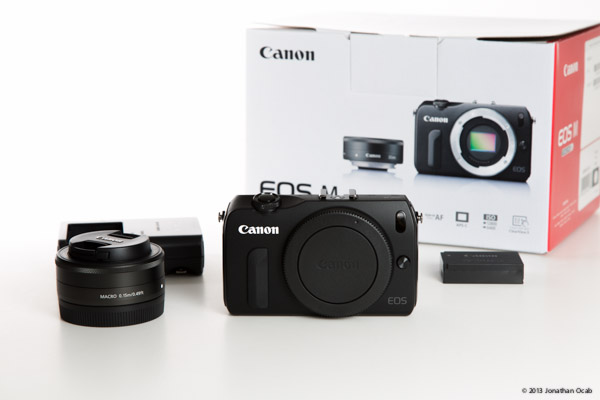
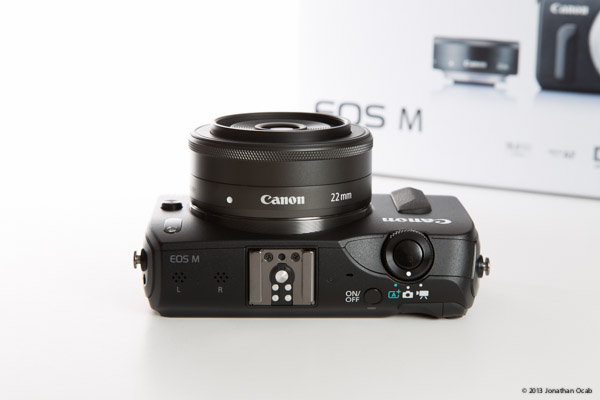
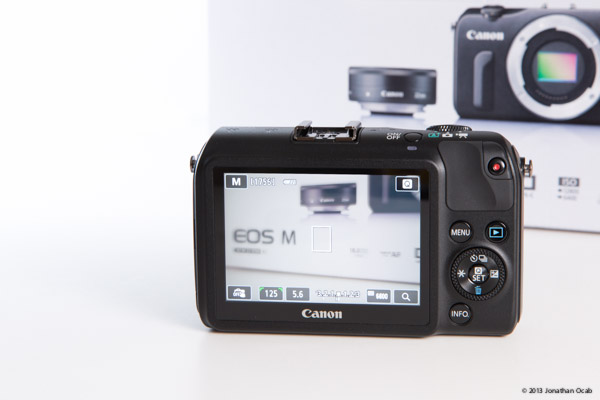
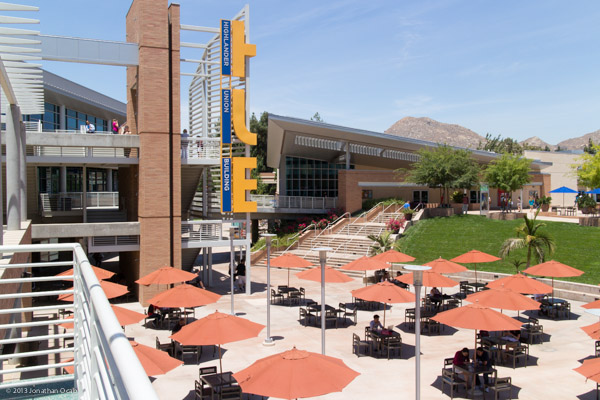
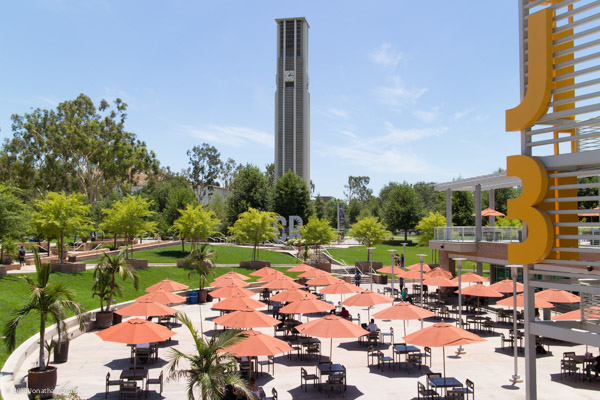
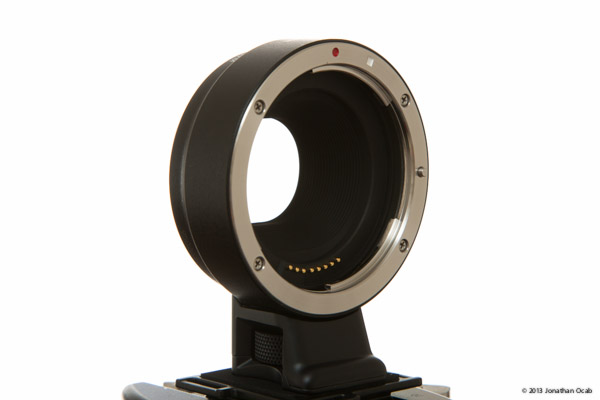
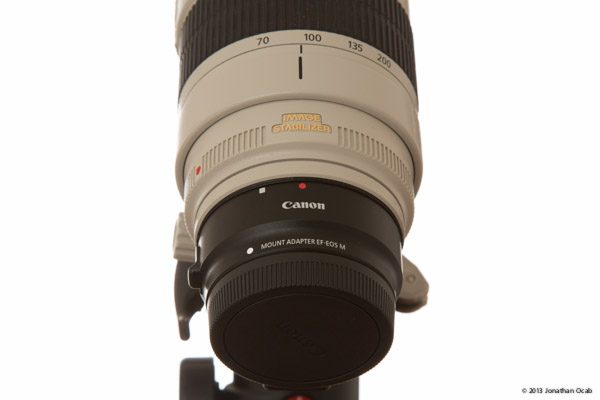
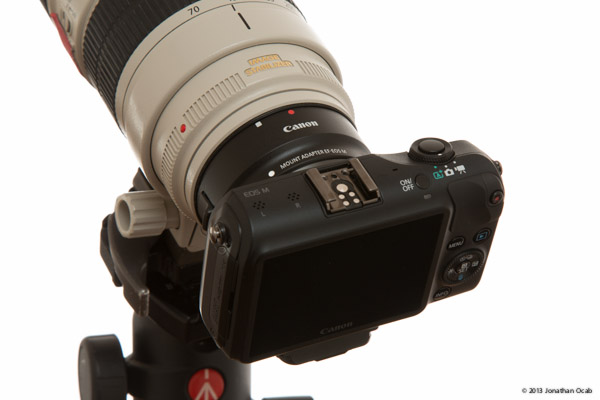
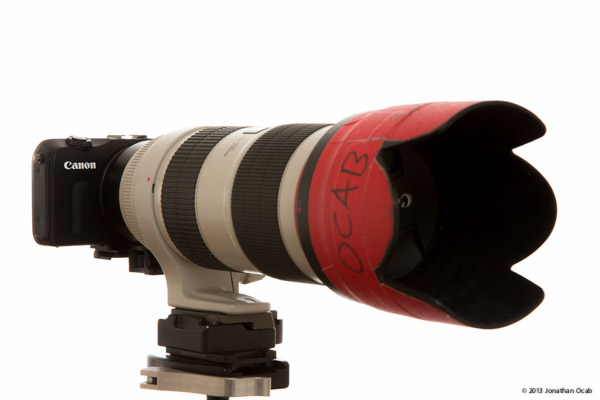

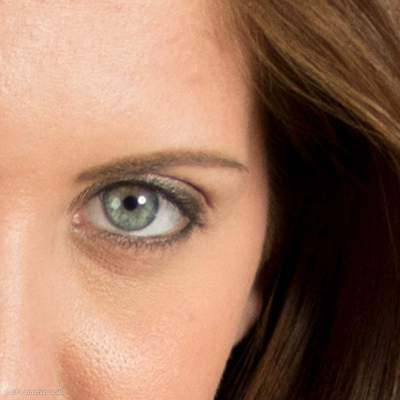
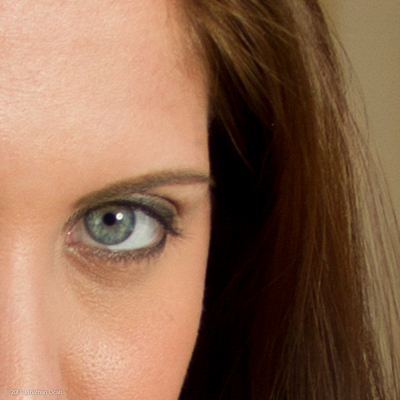
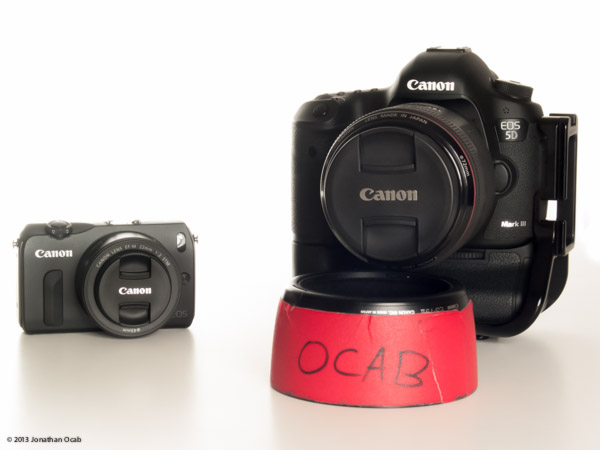
Francis
The cons of mirrorless is the often noticable slow AF. I run into the same situation with my E-PL2. But since all my photos are toy figure / desktop it doesn’t matter much.
Chris Nee
“So when you take a shot during a portrait shoot, you have to wait 2 seconds (and then a few milliseconds for the screen refresh) before you can compose the next shot.”
No you don’t, Just half press the shutter and you’ll get your LCD back. My LCD Review period is set to HOLD, that doesn’t mean I just stand there and wait until the battery is drained.
Olympus OM-D E-M10 Mark II Review | ocabj.net
[…] is why I never really used my Canon EOS M for general photography. I originally bought the EOS M a couple years back because the price had dropped at the time, there was a new firmware release that improved the […]